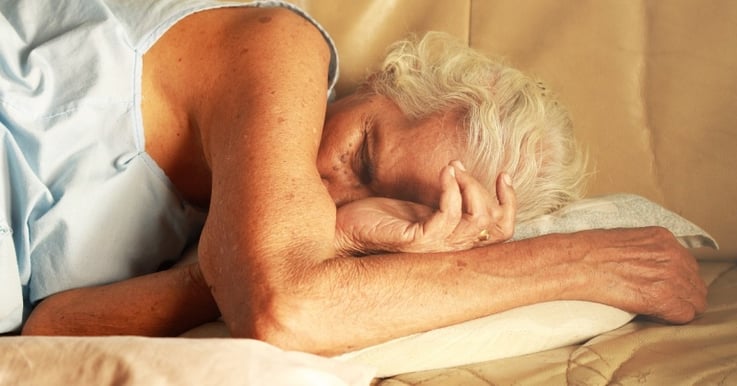
More and more research and investigation has revealed the great need for quality sleep in the elderly. Evidence has shown that the outcomes of better quality sleep may encourage better healing, reduce falls, and reduce use of psychoactive medications—ultimately improving behaviors and psychosocial well-being.
Sleep Hygiene in Your Community
One of the most important things to remember and share with your caregivers is that sleep disorders are not a part of the normal aging process. Sleep is a vital physiological process with important restorative functions that are essential for health, wellbeing, optimal daytime functioning, and longevity. Quite often, sleep-related complaints aren’t reported by the residents or investigated by the primary care provider.
Many times, sleep disorders are common in the elderly due to coexisting medical conditions, including cardiopulmonary, neuropsychiatric, and psychosocial issues. Add to this the use of a wide variety of medications, anesthesia, and caffeine, and you have the perfect storm.
Clinical consequences of sleep deprivation may include daytime drowsiness, impaired intellect, disturbed cognition, increased risk of cardiopulmonary complications, and the risk of falls—thus compromising the resident’s quality of life.
A diagnosis of sleep disorder requires a thorough evaluation by a skilled and experienced physician and requires a comprehensive approach for successful management.
The Link Between Sleep Disorders and Resident Falls
What is your process for identifying the root cause of a resident’s fall in your community? We all know the drill right? Check for environmental hazards, call light in reach, appropriate footwear, etc. But when was the last time someone evaluated the quality of sleep for that resident who is experiencing falls?
Who in your community do you think is at highest risk of sleep deprivation and falls? If you said the resident who came to your community for short term rehab, you would be correct. These residents are community-bound with no intention of staying long term. Not only do these residents want and need their independence, they will take risks other residents may not take (self transfers, refusing to call for assistance, etc.).
Many of our residents arrive in our communities for short-term rehab post-anesthesia for surgical repair of a hip or knee. Remember, anesthesia can take up to 6 months to clear from the system in the elderly and now we're asking them to sleep in a strange place. It doesn’t matter if your short term rehab unit is “just like home” or “a fine hotel”—it's a strange place for a person on pain medication who still has lingering effects of anesthesia. These residents often catch quick naps during the day after a grueling rehab session, which ultimately impacts the quality of sleep they have at night.
How about the residents using CPAP/BPAP equipment in our communities? Have they brought that equipment with them? Remember, this equipment is resident-specific, you can’t lend someone a CPAP/BPAP machine during their stay unless you have a staff member who is qualified to adjust the machine to meet the needs of the resident. Have you ever shared a house with someone who has sleep apnea? Yep, snoring and ultimately a lousy night of sleep for everyone!
Help Residents Get Better Sleep
Bottom line: take an opportunity to discuss sleep habits with residents upon admission. Talk to them about the importance of good sleep hygiene, determine what their usual routine is, what equipment needs they have, what medications and lifestyle choices may interfere with sleep. Remember, you can’t put a square peg in a round hole—if they're nocturnal, find a way to maintain their life habits without increasing risk to their overall health.
Next Steps
- Keep up with our latest content—subscribe to the blog
- Find out how QA Reader helps make you a top LTPAC management team
- See how QA Reader gets more out of your EHR system

